So, this story starts on about Dec 1st of last year.
While trolling through e-bay as I normally I do, I ran into a remarkably good deal on a set of HEL stainless steel brake lines. I happened to mention to endo that I was looking to get a set. And he promptly wrote this e-mail.
Hello Mr.XXXXX,
You don't know me, but I know Sev...and he
has threatened bodily harm to
all that know him if he doesn't recieve below
linked product on or around
the date of Dec.25, 2006. Please heed this
statement, and buy him the damn
lines. Plus, (for mom), it will make him
motorcycle safer for use on public
roads!
http://cgi.ebay.ca/NEW-HEL-BRAKE-LINES-HONDA-
CB600-HORNET-ALL-YEARS_W0QQitemZ330049914570Q
QihZ014QQcategoryZ25623QQrdZ1QQcmdZViewItem

But seriously, he's become a good friend
of mine here in lovely
Fairview, and he hasn't stopped talking about
these brake lines (carbon
fibre look with black fittings), since he
found them. I thought, since he's
too polite to ask for them, I'd toss an email
off (I stole your email from
his computer, I sincerely hope you don't
mind!).
Thanks for your time and sorry for bugging
you!
endo
Some e-mailing back and forth happened, with confirmation from my parents that it was something I was looking for. And on christmas day underneath the tree there was for me a pringles can... with a cheque for the correct amount for the brake lines taped to the side. Very cool.
I ordered them that same day, and they arrived in Edmonton 2 weeks later. I picked them up when we piled South to Edmonton to see the bike show. And installed them last week during some free time in the shop.
Here's the rear lines being changed.
First thing I did was pop the seat and side panel off to give me easy access to the rear reservoir and sucked all the brake fluid out with a cheap syringe.
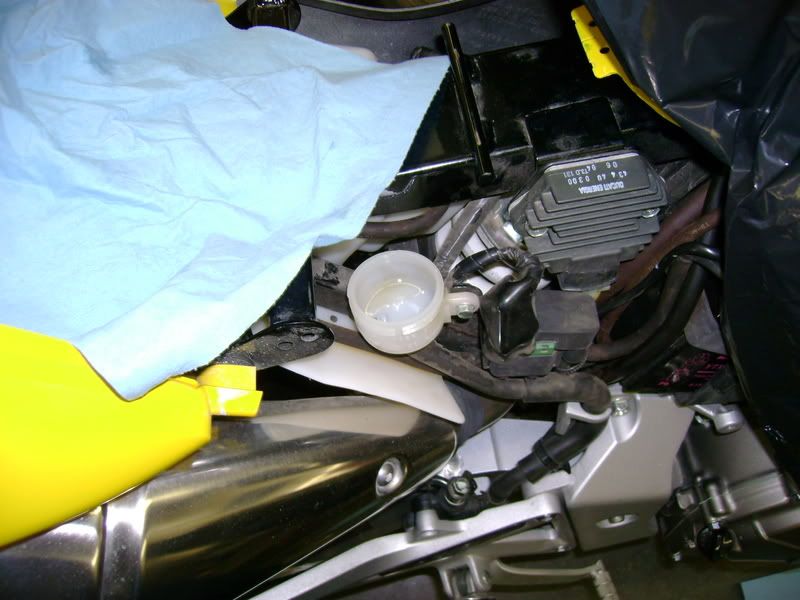
Then tape an empty bottle to the side of the swingarm, and stick an 8mm wrench over the bleed nipple, run a piece of hose from the bleed nipple to the bottle. Open the bleed nipple and pump all the brake fluid out of the line and the caliper body itself.
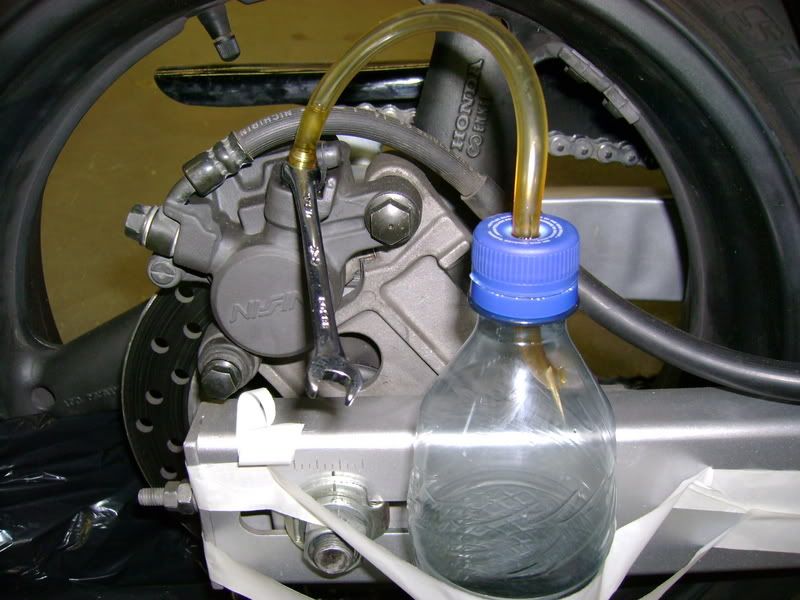
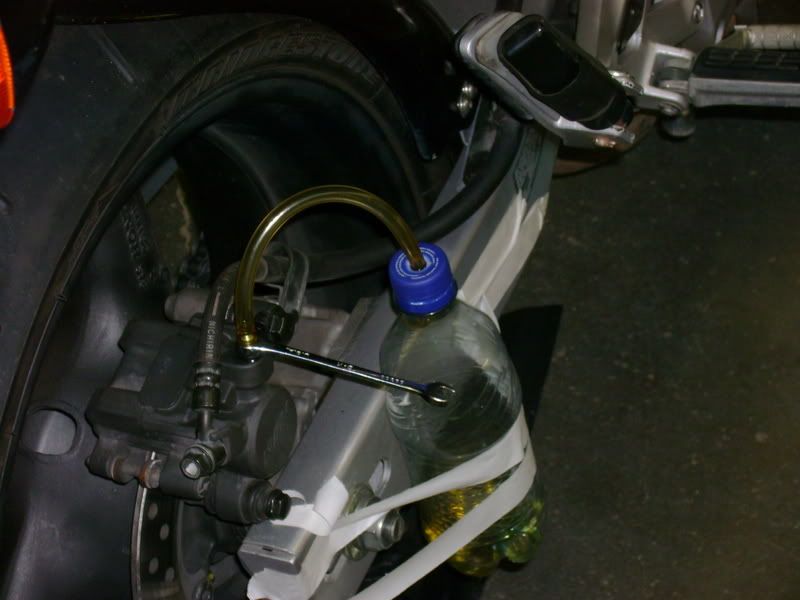
Disconnect your old line, but be sure to keep a rag around the bolt as it will still have some brake fluid in/on it. And that stuff will wreck havok on your tires or strip paint shortly after application. Close the bleed nipple
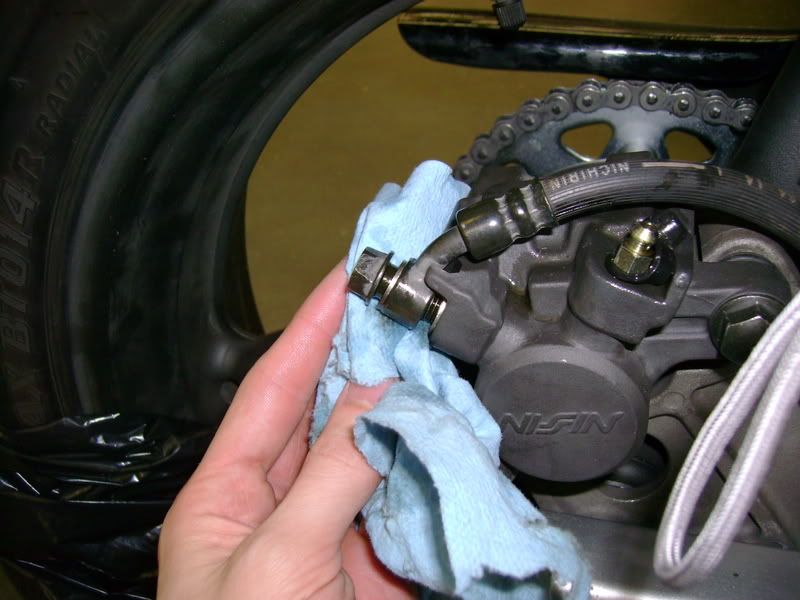
Pull out your old brake line, and thread in the new one.
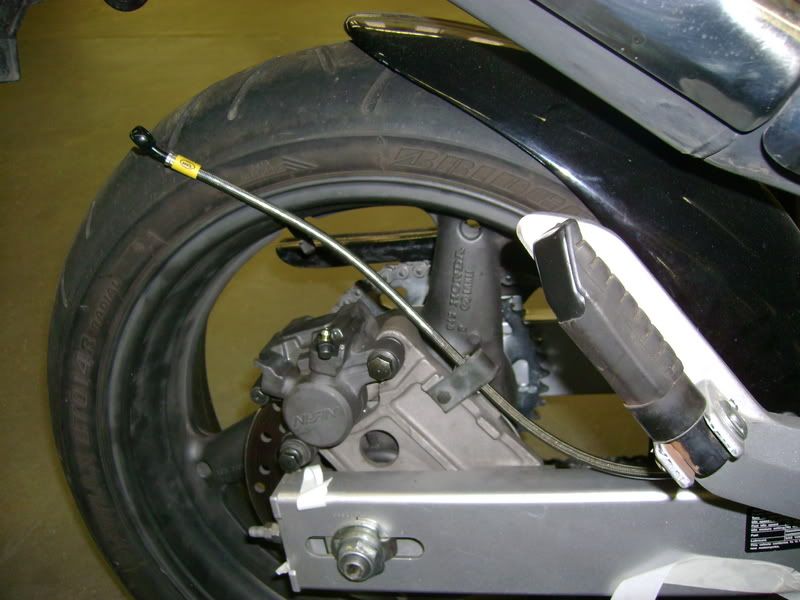
Torque the sucker into place, and then get ready to bleed your lines.
The process is pretty simple
1) Fill the reservoir (keep an eye on this as the level will drop as the brake fluid moves into the line and caliper. If you let any air get in you'll need to start bleeding all over.
2) Pump the brake lever up and down several times, then press it down and keep it pressed down.
3) Open the bleed nipple on the caliper. Keep pressure on the brake lever.
4) You will see brake fluid mixed with air come out of the bleed line.
5) When the lever hits bottom close the nipple.
6) Repeat steps 1-5 until you no longer see air bubbles in the brake fluid. Make sure to keep the reservoir full.
7) Close up the system and use brake clean anywhere you spilled fluid (keep away from tires and paint).
Throughout the process be very careful to keep air from moving back into the system. Don't release the brake lever with the bleed nipple open, or allow the reservoir to empty.
I ran into a small problem, my rear line had a single rubber mount that could be slid anywhere along it's length. But it had to pass through two metal brackets. While it probably would have been okay to just leave it there and let it rub a little I didn't feel comfortable just leaving it like that. So I took the old brake lines and carved off a small section of the rubber surround.
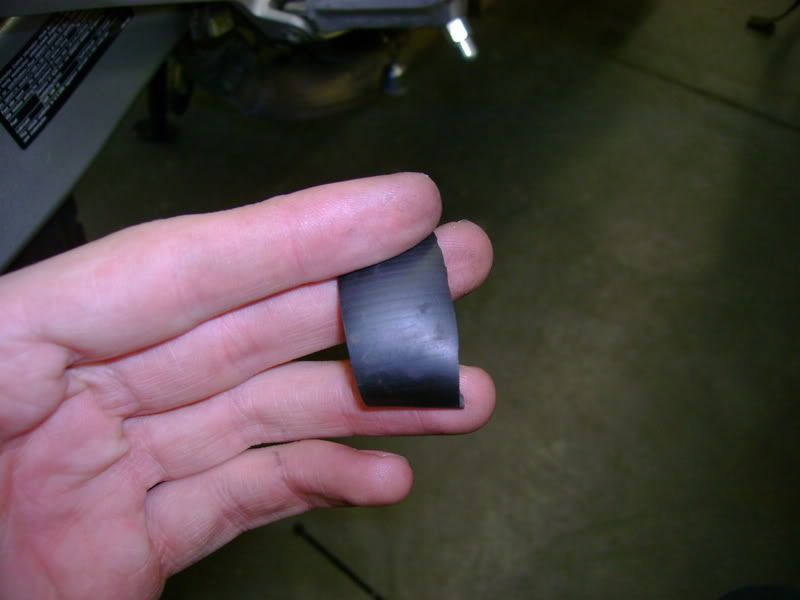
Basically just a piece of rubber hose that has been slit down it's length. I just shoved it into the bracket and ziptied it in place.
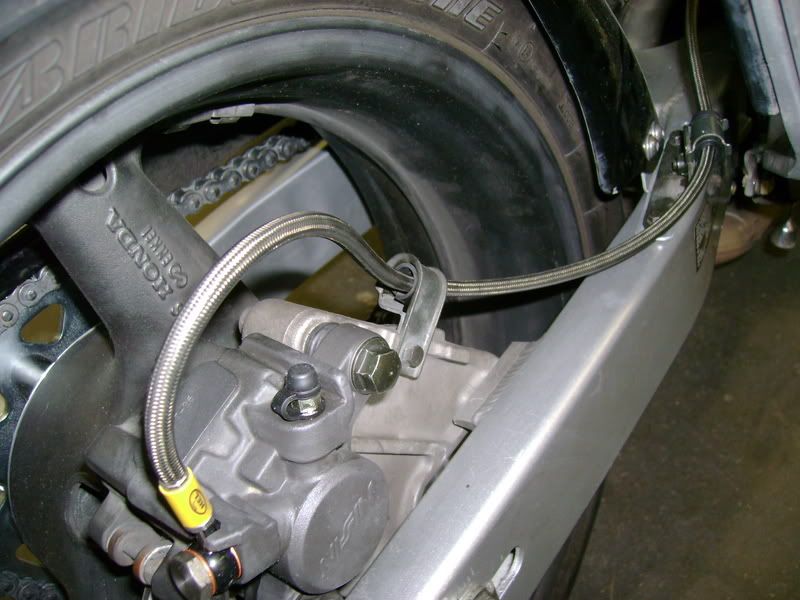
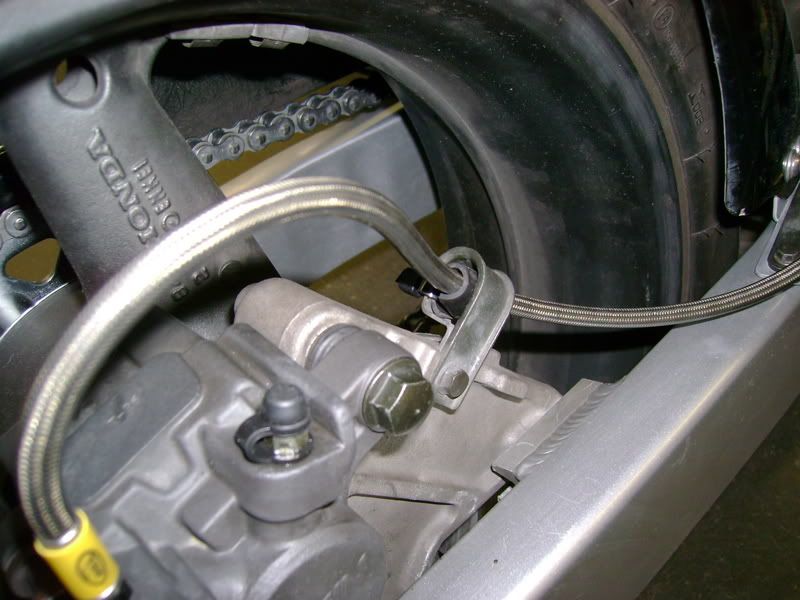
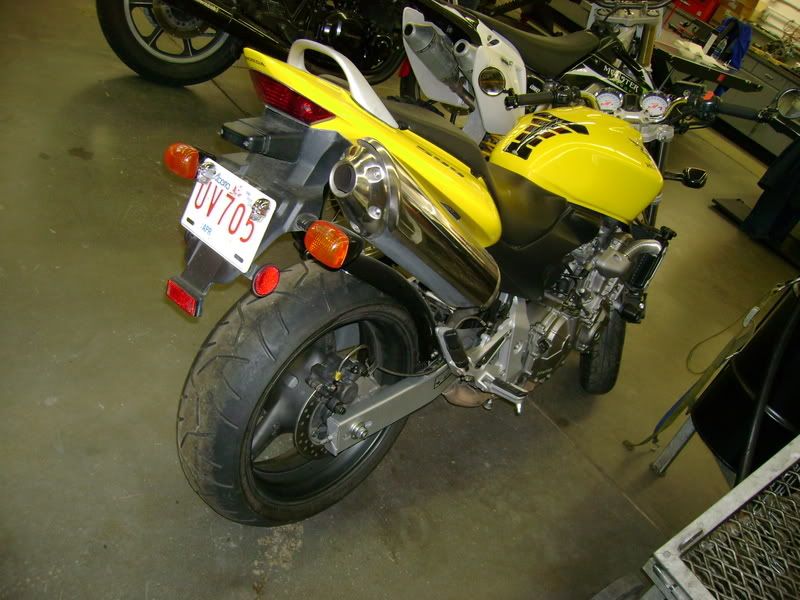
Silly me, I forgot to take pictures of the bike while I did the front lines (did the hard one first) so here's what it looked like afterwards.

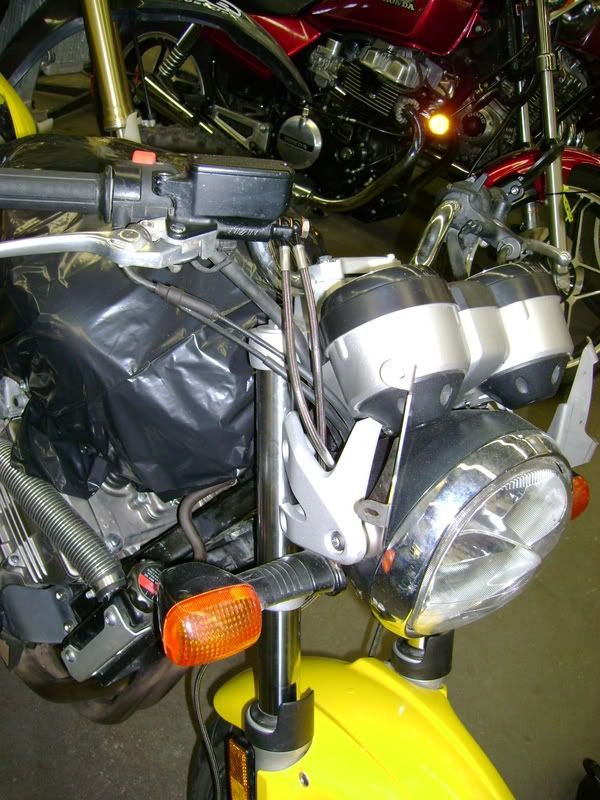
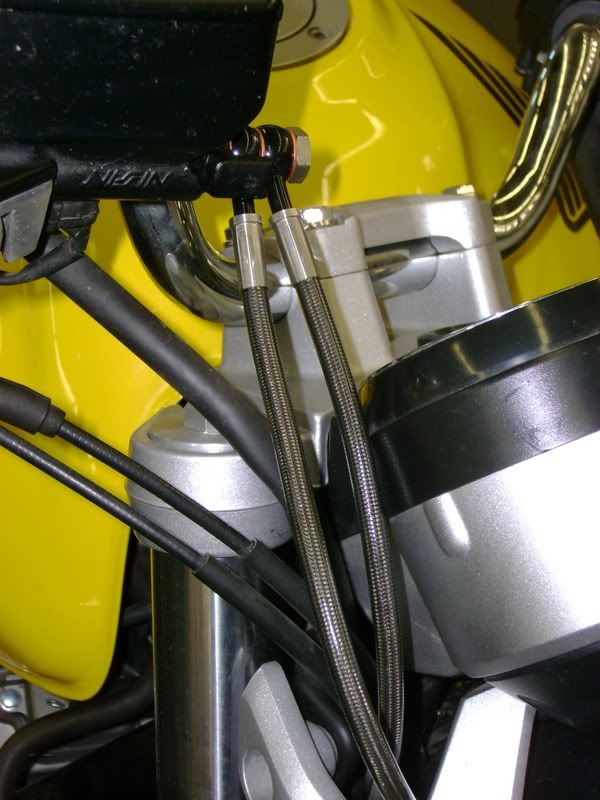
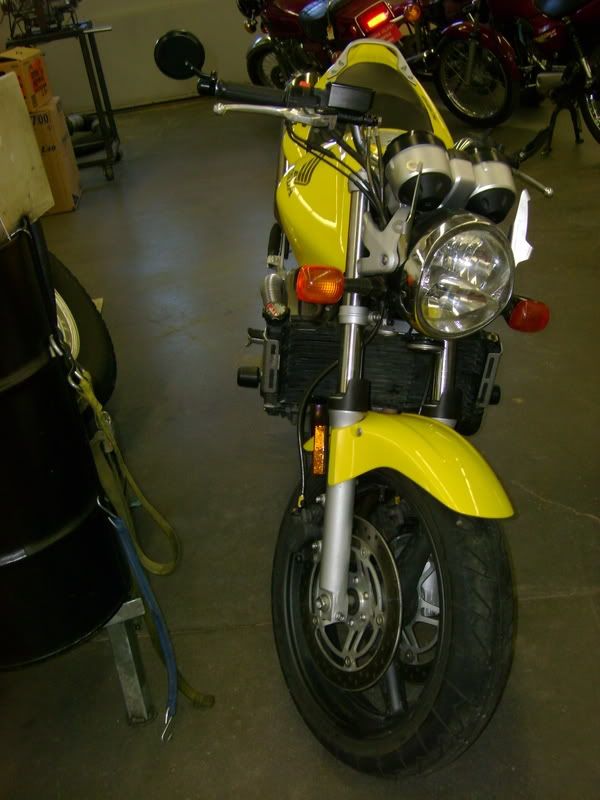
Here's the old front lines.
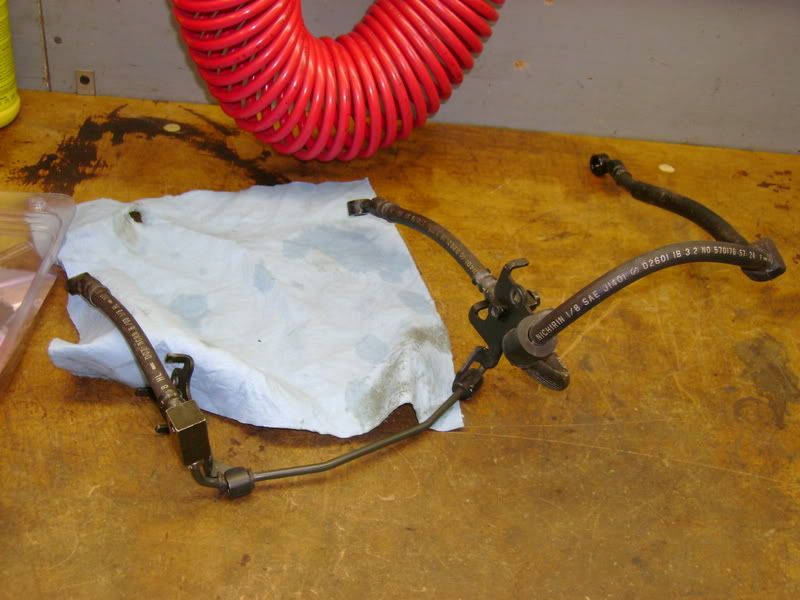
As you can see they used a rather antiquated system which used a solid passover line to get braking power to the front left caliper. I've had a slight problem with the bike pulling to the right under braking, I'm hoping this will solve it (in addition to me fixing the handlebars). As an added bonus the thinner lines and lack of passover really clean up the front in my opinion.
As for utility, well I'm not sure at this point as there's about 2 feet of snow on the ground up here. But just the sit and squeeze test indicates that the brakes are much... solider (is that a word?), there is a definite difference between how it feels to use these lines and the old ones.
They do a GREAT job of stopping the bike while I'm rolling it around the shop, I can leave little skid marks off the front wheel if I want to... *sheepish grin*
Many thanks to Mom and Dad for the great gift, and thanks to endo for letting them know

;).
Found out after removal that my lines were 4 years old meaning that they should have been replaced this year anyways (according to brake line manufacturers). Talk about a lucky brake (pun intended).
Of course I'm generalizing from a single example here, but everyone does that. At least I do.
[url=http://sirac-sev.blogspot.com/][img]http://i12.photobucket.com/albums/a227/Sevulturus/sig.jpg[/img][/url]
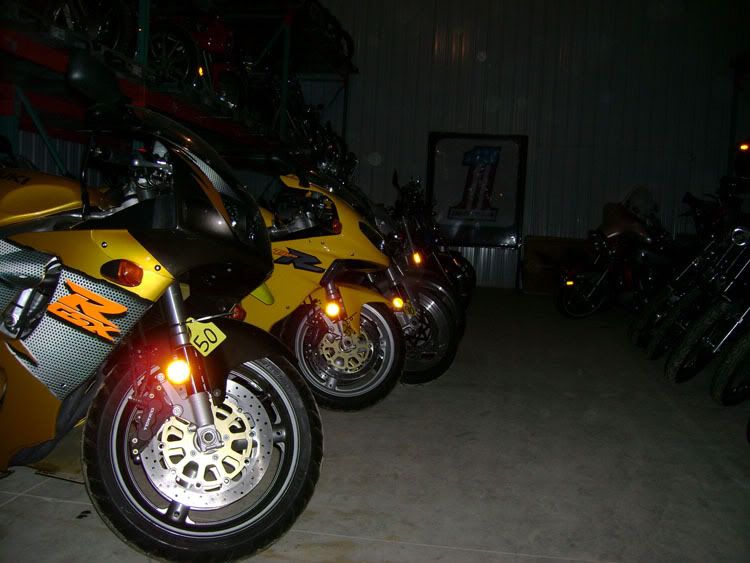
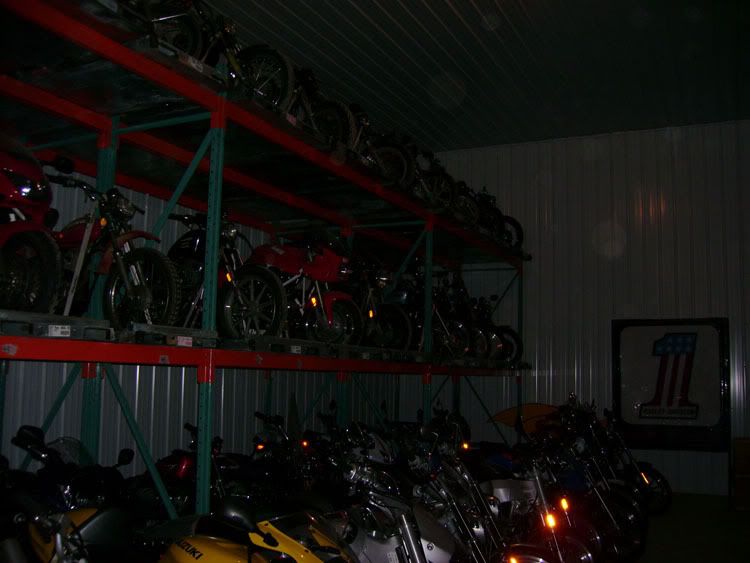
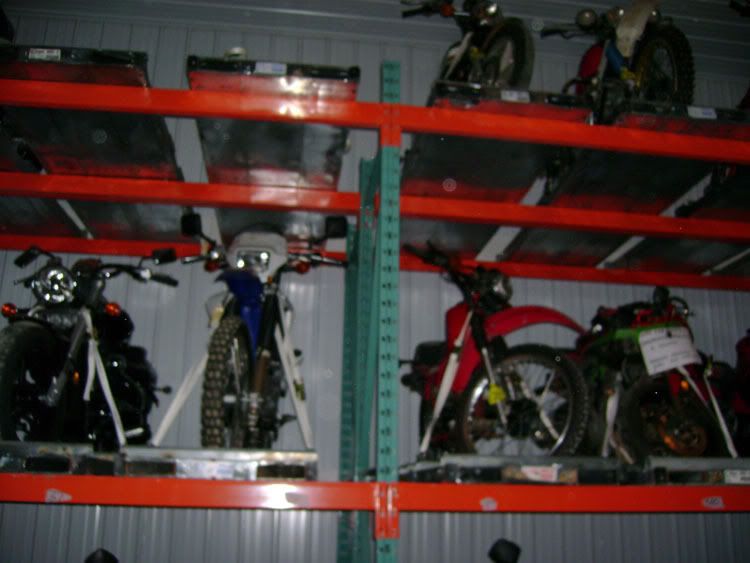
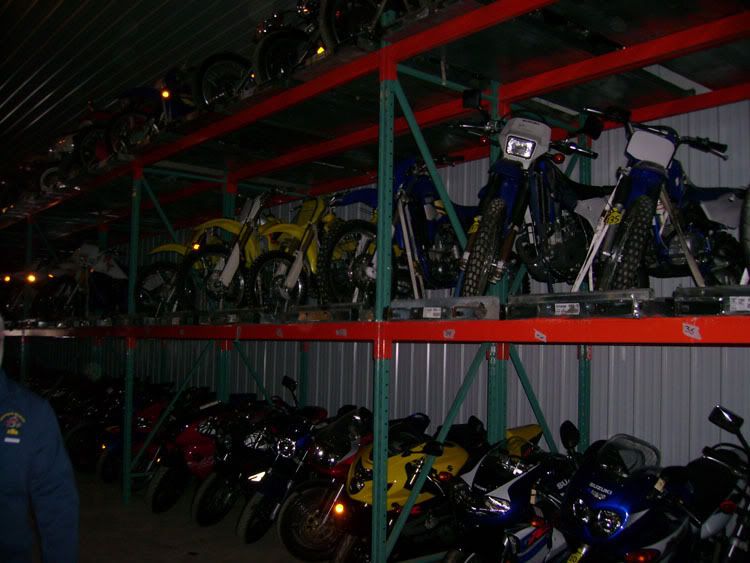







But seriously, he's become a good friend














